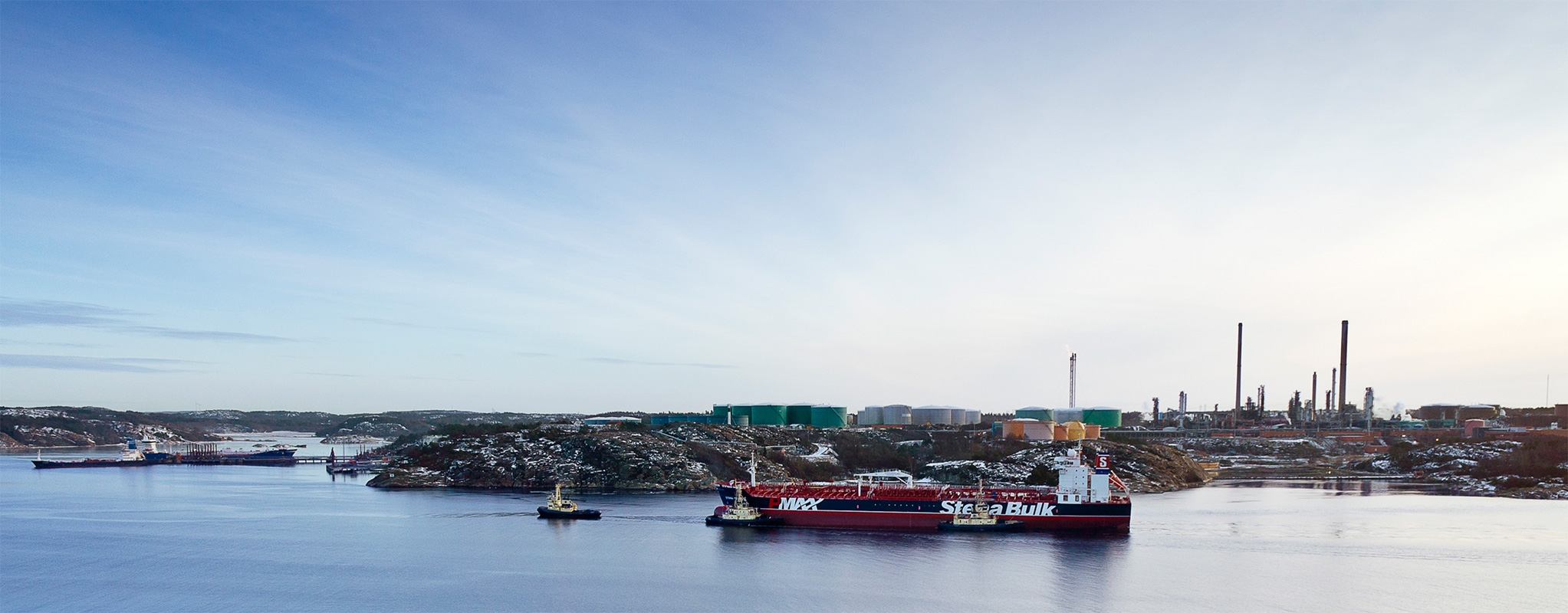Firm belief in a strong market
Our belief in a gradually stronger tanker market has recently become firmer. In addition to positive fundamental factors, namely high demand for oil and low net fleet growth, both a strong increase in US exports and the consequences of IMO 2020 are also contributing to creating exciting conditions.
After two years of weak markets, the tanker markets finally took an upward turn towards the end of 2018. During Q4, freight rates showed a remarkable increase – from USD 10,000 per day in September for a Suezmax vessel to about USD 50,000 per day in December. The positive trend is not only evident in shipping rates, but also in financial reporting, where virtually all listed tanker companies, including Concordia Maritime, reported a profit for the first quarter.
2019 then started just as we expected – i.e. volatile but at a higher level than in 2018. The decision by OPEC and other major oil producers to reduce production from late 2018/early 2019, in combination with unusually early refinery maintenance for the year, has led to yet some weaker markets another market decline during the second quarter. However, we believe in an upturn from the third quarter onwards.
Next tanker upturn around the corner
In both the 2018 annual report and the interim report for Q1 2019, we have communicated a positive picture of our view of the market’s future development. This belief, which is shared by both other tanker shipping companies and several banks and analysis institutes, has recently been reinforced. Let us have a closer look at the drivers again:
- Stable demand for oil and low net fleet growth
Fundamental factors such as demand for oil (and therefore tanker transport) and the development of the tanker fleet speak for themselves. We believe that at the next OPEC meeting in late June, it will be decided to make a gradual return to normal production from autumn 2019 onwards. The supply side looks better than in a long time. The weak market in recent years has resulted in a significant phasing-out of tankers and with the small number of new orders, this means that the tanker fleet will only grow by about two percent in the next two years. - Further increase in transport demand as a result of structural changes
However, the fleet growth rate and OPEC’s production are factors that rise and fall over time. This has been the case before and it will remain the case. What makes the next few years particularly interesting is the sharp increase in US oil production and the IMO’s new regulations that come into force in 2020.
The US production increase is expected to bring continuing strong growth in exports. At present, 2.5-3.0 mbd of crude oil and about 5 mbd of oil products are already exported. During the next 2-3 years, exports of crude oil are expected to double, and exports of processed products will also increase. The increase will mean longer transportation distances, with an increase in transport demand and therefore a higher utilisation rate for the vessels.
The new IMO 2020 regulations will bring a sharp increase in demand for low-sulphur fuel. A large proportion will be produced at newly built refineries in Asia and then transported westward to customers. Here too, the effect will be felt in the form of increased transport demand.
IMO 2020 will also contribute positively in a shorter perspective. As an alternative to switching to low-sulphur fuels, shipowners can opt to install scrubbers instead. In autumn 2019, about 300 tankers are expected go into drydock for scrubber installation, which will take several weeks per vessel. A significant number of tankers will therefore be unavailable for assignments from autumn 2019. This will affect the market in a short-term perspective.
Overall, we therefore see a trend towards new types of flows and transport routes ahead of us. Crude oil will increasingly need to be transported from west to east and then back again in the form of refined (and of course low-sulphur) oil products.
The bottom line is that after several really tough years, the future now looks bright. To learn more about these issues, we recommend Kepler Cheuvreux’s updated market and equity analysis, which is available to read here.
Gothenburg, June 2019,
Kim Ullman
CEO

